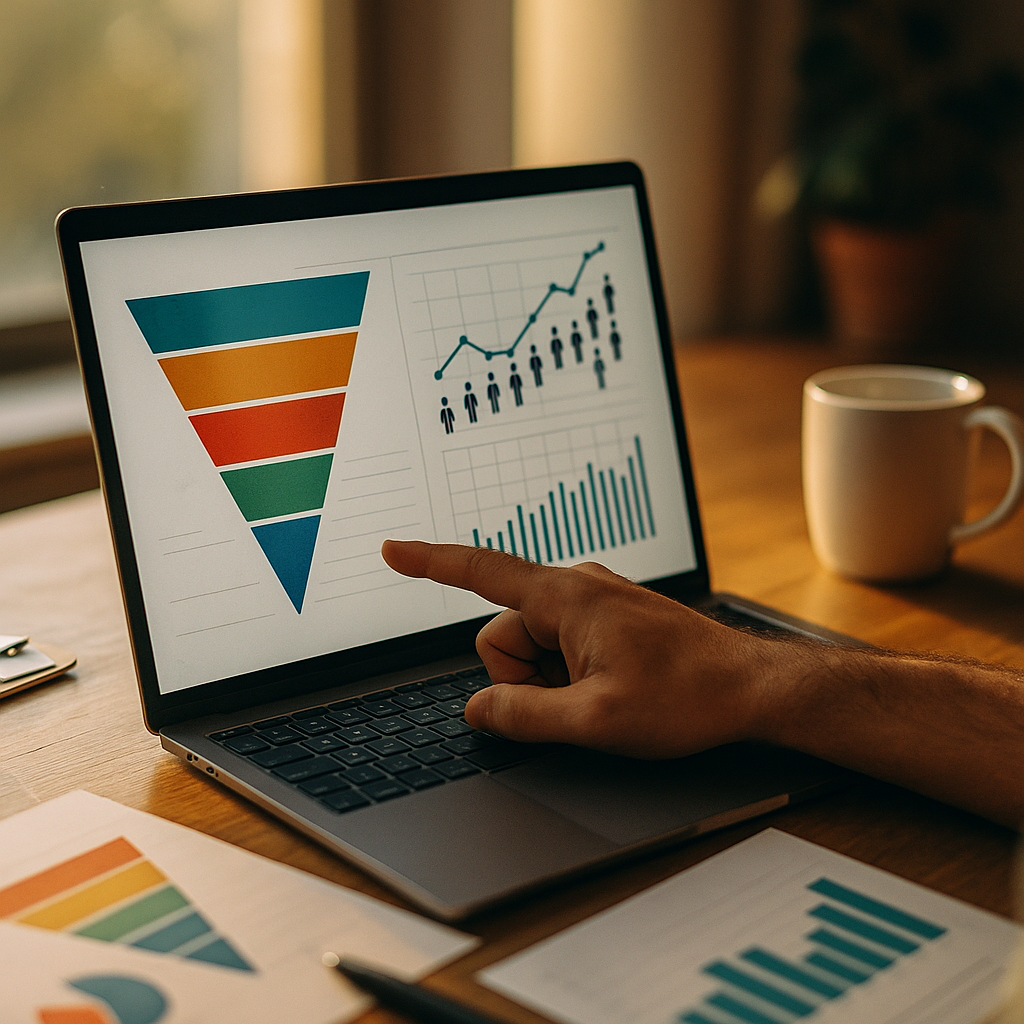Funnel optimization techniques for lead generation are the secret sauce behind successful digital marketing campaigns in 2025. Brands that master these methods effectively turn visitors into loyal customers and boost ROI. Ready for actionable strategies you can implement right away? Let’s break down exactly how to perfect each stage of your marketing funnel.
Understanding the Lead Generation Funnel Structure
Before diving into the specifics of funnel optimization strategies, it’s essential to understand the overall structure of a lead generation funnel. A typical funnel has several key stages:
- Top of Funnel (TOFU): Awareness and attracting new visitors.
- Middle of Funnel (MOFU): Nurturing leads through valuable content and engagement.
- Bottom of Funnel (BOFU): Converting high-intent leads into customers.
Pinpointing which stage needs work can dramatically improve the efficacy of your optimization efforts. Each stage requires a different approach, making it crucial to analyze your funnel holistically.
Data-Driven Conversion Rate Optimization for Leads
Conversion rate optimization (CRO) for lead generation thrives on actionable analytics. Rely on up-to-date metrics from platforms such as Google Analytics 4 or HubSpot to identify choke points and opportunities. According to a 2025 Semrush survey, businesses that use CRO tools see a 48% higher lead conversion rate on average.
- Identify Drop-off Points: Analyze heatmaps, click flows, and session recordings to spot abandonment causes.
- Test Landing Page Elements: Run A/B tests on headlines, calls to action (CTAs), and form designs.
- Shorten Forms: Ask for only essential information to keep friction low.
- Personalization: Use dynamic content like smart CTAs based on user behavior or location.
Deploying these funnel optimization techniques consistently aligns your site with what your audience expects—and needs—to convert.
Automated Nurturing and Segmentation in Funnel Management
Effective funnel management demands nuanced lead nurturing. Leverage automation platforms such as ActiveCampaign or Marketo to deliver tailored messaging at scale. Segmentation is at the core of precision:
- Behavior-based Triggers: Send emails or SMS based on specific user actions (e.g., download, webinar attendance).
- Progressive Profiling: Gradually request more data as leads engage, enriching their profiles.
- Lead Scoring: Assign points to leads by engagement levels to prioritize follow-up efforts.
A recent MarketingProfs study in 2025 found that segmented and automated emails yield 56% more qualified leads compared to non-segmented campaigns. Strategic automation keeps leads engaged and moves them efficiently down the funnel.
Optimizing Content for Each Funnel Stage
Your content strategy should directly reflect your prospects’ needs at every funnel milestone. This approach ensures relevance, builds trust, and establishes authority—key pillars of Google’s EEAT standards:
- TOFU: Educational blog posts, webinars, and eBooks raise awareness.
- MOFU: Case studies, detailed guides, and whitepapers demonstrate expertise and foster deeper engagement.
- BOFU: Product demos, testimonials, and personalized consultations combat last-minute objections and solidify intent.
Always refresh your content with up-to-date information and insights. Well-researched, audience-centered content supports not only conversion but also your brand’s credibility.
Utilizing Trust Signals and Social Proof for Conversion Funnel Optimization
Trust plays a decisive role in funnel performance. According to Edelman’s 2025 Trust Barometer, 78% of online users decide to submit contact details only after seeing credible reviews or certifications. Incorporate multiple types of social proof across your funnel:
- Customer Testimonials: Authentic, specific endorsements from real users.
- Third-party Reviews: Ratings from platforms like G2 or Capterra.
- Security Badges: Visible SSL, privacy, and compliance seals on forms and checkout pages.
- Case Studies: In-depth success stories showcasing your solution’s impact.
Building and displaying these trust signals addresses skepticism, increases confidence, and removes barriers to conversion.
Continuous Funnel Testing and Iteration
The digital landscape in 2025 is constantly evolving, requiring continuous testing and refinement of your optimization process. Funnel testing best practices include:
- Frequent A/B Testing: Compare different headlines, layouts, and offers.
- User Feedback Loops: Collect qualitative data through on-page surveys or chatbots.
- Performance Reviews: Schedule regular funnel audits to adapt to algorithm updates and shifting user preferences.
The most successful funnel optimization strategies embrace ongoing learning. By prioritizing iterative improvement, your funnel will keep meeting customer expectations and converting leads over time.
Effective funnel optimization techniques for lead generation hinge on tailored content, automation, data insights, and trust-building. Implement these proven strategies and regularly revisit your funnel. The result? Sustainable, high-quality lead generation and steady business growth.
FAQs on Funnel Optimization Techniques for Lead Generation
-
What is the most important stage to optimize in a lead generation funnel?
The most important stage is the one where you see the greatest drop-off or weakest conversion rate. Regular analysis helps pinpoint where prospects need more incentive, clarity, or trust to move forward.
-
How often should I update my funnel optimization strategies?
Review and update your strategies at least quarterly or whenever there are major platform updates, new marketing trends, or evident changes in consumer behavior.
-
Can automation replace manual funnel management?
Automation streamlines repetitive tasks and improves efficiency, but human oversight is crucial for quality control, creative messaging, and high-priority lead nurturing.
-
How do I measure the success of my funnel optimization efforts?
Track key metrics such as conversion rates, cost per lead, lead quality score, and overall ROI. Analyze both quantitative and qualitative feedback to drive continuous improvement.
-
What tools are recommended for funnel analysis in 2025?
Popular tools include Google Analytics 4, HubSpot, Hotjar, and dedicated CRO solutions like VWO. Choose tools based on integration capabilities and your team’s workflow.
